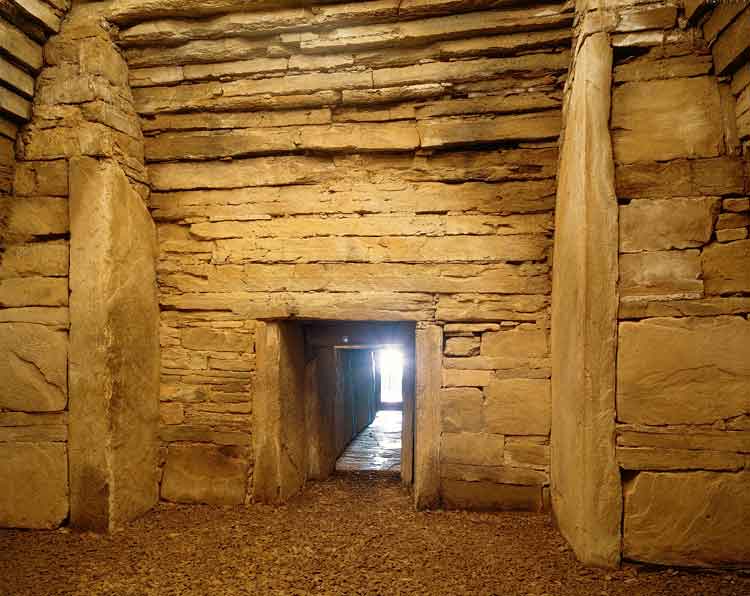I just knew I was going to fall in love with these remote islands sitting between Norway and Scotland’s mainland. ‘How did you know this?’ I hear you cry. Well quite simply because The Orkney Islands bring together many of my favourite things in life; history, archaeology– oh – and the Scottish landscapes and welcoming people of course.
The Orkney Islands contain some of the oldest and best-preserved Neolithic sites in Europe, and the “Heart of Neolithic Orkney” is a designated UNESCO World Heritage Site. Naturally I was dying to see some of these sites with my own eyes. After all, I had read so much about them over the years.
Amongst the many treasures we discovered in Orkney, none was more surprising, nor more awe-inspiring than Maeshowe. For those who don’t know, Maeshowe is a Neolithic chambered tomb which pre-dates the Egyptian pyramids.
Instead of trying to muster up some new words on the subject I thought I would share some of the notes I wrote in my travel journal at the time. I think it captures my excitement.
Viking Vandals Visit
“Wow … Well the stand-out highlight of today was Maeshowe, a burial/ceremonial tomb near Skara Brae. It is one of the best examples of a chambered tomb in North West Europe – a master piece of Neolithic design (who knew I was such an expert on these matters). In addition to its own fascinating history there were even authentic runic carvings inside from those rogue “vandal Vikings”. Quite a boastful lot as it turned out. When translated the runes spoke of stolen treasure and of course there was the usual cheeky bragging men enjoy when exalting their prowess in all matters involving fighting, workmanship and women. There was so much to take in about Maeshowe, it was quite breathtaking. I just couldn’t stop looking around me and thinking wow! It was strangely emotional.”
As I mentioned in my journal, the fascinating story about Meashowe is the fact that not only does it have its own history dating back nearly 5000 years, but that history has been overlaid by another story nearly 4000 years later courtesy of those naughty Vikings.
I know both my partner and myself felt we had experienced something truly ‘different’. I think for Peter it was something more tangible as many of his family have roots in Norway. For me – well I was familiar and excited by the runes for another reason. I used to ‘read’ the runes in my teens and through my 20s. It was my earliest form of dabbling such matters. I used to enjoy looking at the carvings, and tracing their outline with my finger, wondering if I would ever be lucky enough to see authentic ones.
Mysteries of Maeshowe
It’s quite remarkable to think that Maeshowe is dated at around 2800 BC. The earth mound covered in grass cloaks a mysterious world inside. To enter you must bend down and shuffle (yes – even me – and I’m only 5ft 2 and a bit) through a low 9m long passage. The passage climbs slightly and enters the main square chamber. The sides of the chamber are made up of flat blocks fitted together. On three sides of the tomb there are additional side chambers. No-one is completely sure how these chambers were used but it is possible bones were laid in there.
Apart from its amazing structure, one of the more interesting aspects of its construction is its mid-winter alignment. In the weeks leading up to the winter solstice, the darkest time of the year, the last rays of sun shine through the entrance.
Of course there are many theories we can consider around the links between death and mid-winter, but the truth is we will never really know why Maeshow was aligned in such a way. Archaeologists are sure that those who crafted Maeshow were marking time in some way. I personally like to think Maeshowe was designed to illuminate the place where their dead loved ones lived on, providing them with light at the darkest time of the year.
 Send to Kindle
Send to Kindle

Recent Comments